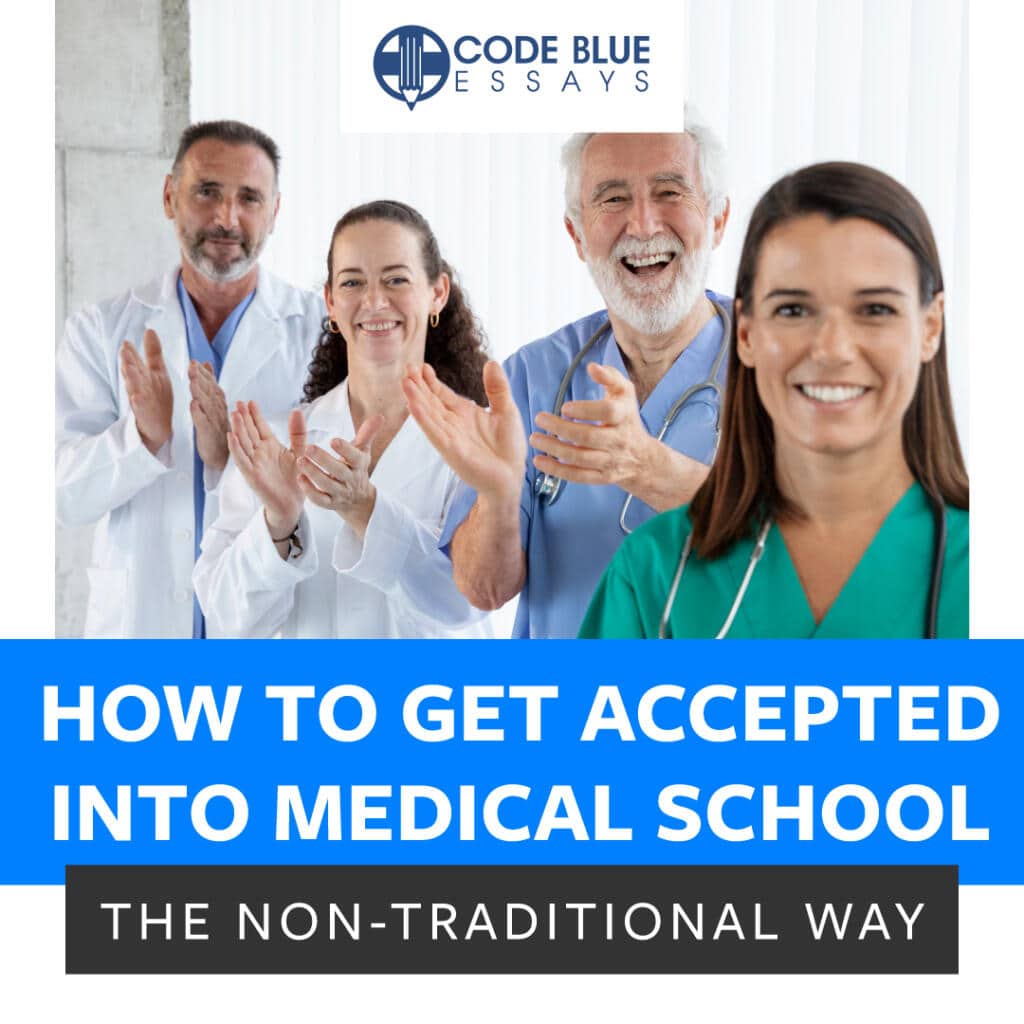How to Get Accepted As A Non-Traditional Medical Student
0 Comments

Are you a prospective non-traditional medical student looking to get accepted into medical school? You may be wondering how to stand out from the competition in medical school admissions. Luckily, there are creative ways to make yourself shine in the application process. With the help of Code Blue Essays, you can learn how to utilize your unique story to your advantage and increase your chances of getting accepted into the medical school of your dreams.
Here’s what you need to know about how to get accepted into medical school the non-traditional way…
The traditional path to medical school typically involves completing a four-year college degree and then applying to medical school during the summer between junior and senior year. The average age of students accepted into medical school is 24, and many students take at least one gap year before enrolling. In fact, in a recent study by the AAMC, 44.1% of students accepted took a gap year before medical school, and 33.7% went straight to medical school after college. This means that more matriculated students actually took time off!
These individuals that take more than two years before entering medical school, are considered “nontraditional applicants.” There are also direct medical programs that allow students to complete their undergraduate and medical degree in 6 to 8 years. These early assurance programs usually offer conditional acceptance to medical school and do not require the MCAT.
Taking a gap year (or two) can be a non-traditional yet effective approach to getting into medical school. Many students choose to take a gap year for various reasons. It can be an opportunity to strengthen their GPA or MCAT scores, pay down debt, or simply take a break before diving into the demanding journey of medical school.
However, it’s important to note that simply padding your application with lots of short-term activities during the gap year may not be beneficial. Instead, use this time to find experiences that will help improve areas of weakness in your application. Consider volunteering in a healthcare setting or conducting research in a relevant field. Take a job that will enhance your medical school application, such as a medical scribe, phlebotomist, EMT or pharmacy tech. Shadowing a doctor will also give you hands-off experience to observe a physician’s daily activities. Make a goal to shadow 2-4 different physicians for 50-100 total hours, across multiple specialties and contexts. This will help you understand what a doctor does day to day.
These experiences will not only enhance your skills and knowledge but also demonstrate your commitment to the field of medicine.
Be sure you complete all of your prerequisites and strengthen your GPA if you need to. Consider taking additional classes through a post-bacc program or on your own. You can also take coursework recommended by medical schools that you maybe didn’t have time to take during undergrad.
Taking a gap year has become increasingly common between graduating college and applying to medical school. Admissions committees recognize the value of applicants taking time to gain real-world experience and grow personally before entering medical school.
In your application and during your interviews, it’s important to avoid phrases like “time off” when discussing your gap year. Instead, focus on the valuable experiences and growth you gained during that time.
Managing student loans during the gap year is also crucial. Compile contact information for each of your federal loan servicers and ensure you understand the repayment plans available. It’s wise to select a repayment plan before the grace period is over to avoid any penalties or issues.
By taking a non-traditional approach like a gap year, you can stand out among other medical school applicants and demonstrate your dedication to the field. Consider utilizing this time wisely and working with an advisor or team of advisors, such as Code Blue Essays, who can provide invaluable advice and assistance throughout the application process.
From primary application review, to reapplication services, our team at Code Blue Essays can help you demonstrate how your gap year, or non-traditional application is valuable to each medical school you apply to, and why you are a stand-out applicant!
Our services include:
We understand the challenges of the medical application process and the importance of presenting your best self on paper, whether you are a traditional or nontraditional applicant!